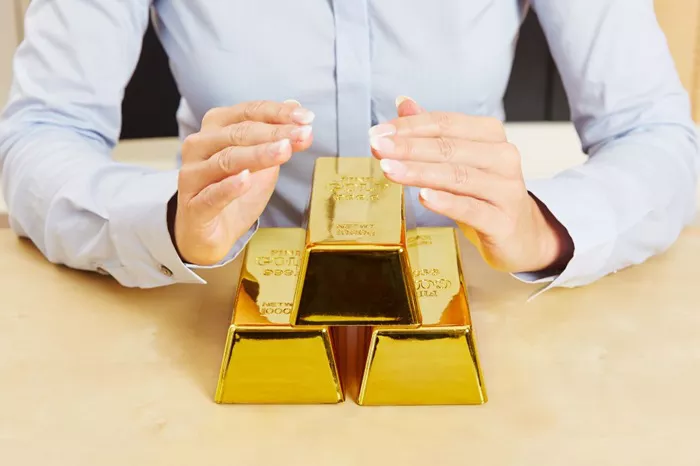Gold is experiencing a surge in value, with its price rising more than 40% over the past year. In late April 2025, it surpassed $3,500 per troy ounce, setting a new all-time record, even when adjusted for inflation. This marked an increase from the previous peak reached in 1980, when it hit $2,684. Several factors have contributed to this rise, including economic uncertainty, rising inflation risks, and geopolitical instability.
Emma Siebenborn, the strategies director of Hatton Garden Metals, a gold dealership in London’s Hatton Garden district, explains how much gold is flowing into the market. She shows a plastic tub filled with old jewelry that amounts to about £250,000 worth of gold, which will be melted down and recycled. Alongside it, there are elegantly displayed gold coins and bars, one weighing 1 kg and worth around £80,000. The growing demand for gold is evident, with people even queuing outside her store to sell their gold. Zoe Lyons, Emma’s sister and managing director, notes that there is a mixture of excitement and anxiety surrounding gold prices.
The gold rush has been partly triggered by the policies of former US President Donald Trump, who introduced unpredictable trade changes that shook markets. As the dollar value fluctuated, gold emerged as a safer investment, viewed as a solid store of value. This situation has resulted in a perfect storm for gold, with many investors seeking refuge in the metal. Gold, unlike currencies that lose value over time, is seen as a stable asset because it can’t be printed or manipulated by central banks.
Gold’s rising popularity has also been fueled by Exchange Traded Funds (ETFs), which allow institutional investors to buy and sell shares of gold without holding physical gold. These ETFs have helped push up the price of gold. In the past, major spikes in gold prices have often been followed by sharp declines. The 1980 spike, for example, was followed by a 65% drop within months. A similar trend occurred in 2011, when prices fell by 18% within four months.
The recent surge in gold prices has prompted many to question whether the upward trend will continue. Analysts point to the increasing demand for gold from central banks, with countries such as Poland, Turkey, and China buying large amounts to diversify their reserves. The shift away from the US dollar has made gold an attractive alternative, particularly for nations seeking to protect their wealth from political instability.
While some experts predict that the price of gold could continue to rise, others are concerned that the market is overheating. Analysts such as Jon Mills from Morningstar have raised the possibility of a price drop in the coming years, suggesting that the increased production of gold from mining companies and recycled gold, combined with a slowdown in central bank purchases, could lead to a decrease in price. Even with rising mining costs, the overall market sentiment suggests a potential correction.
Gold may provide a sense of security amid economic uncertainty, but it remains vulnerable to price fluctuations. Whether the price will continue to rise or experience a sharp correction is uncertain, making gold’s status as a “safe haven” investment less assured than it may seem. As gold hits new highs, investors must consider whether it represents a solid, long-term investment or the beginning of a market bubble.
Related Topics:
Gold Prices Decline Amid Positive US-China Trade Talks

